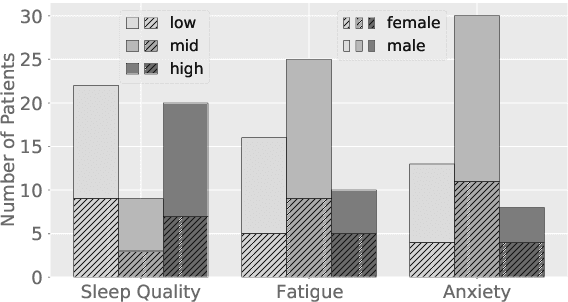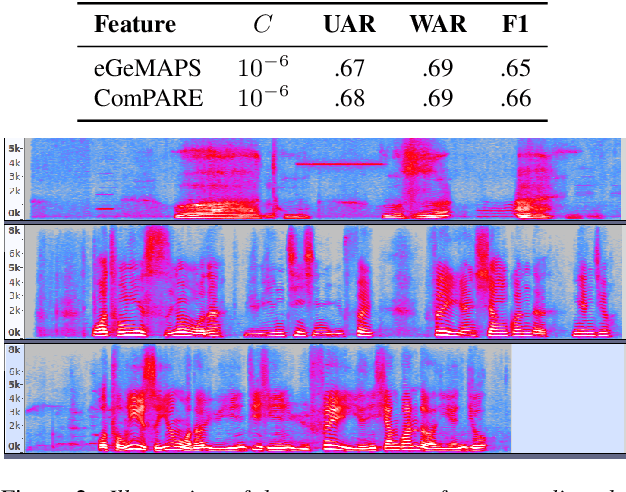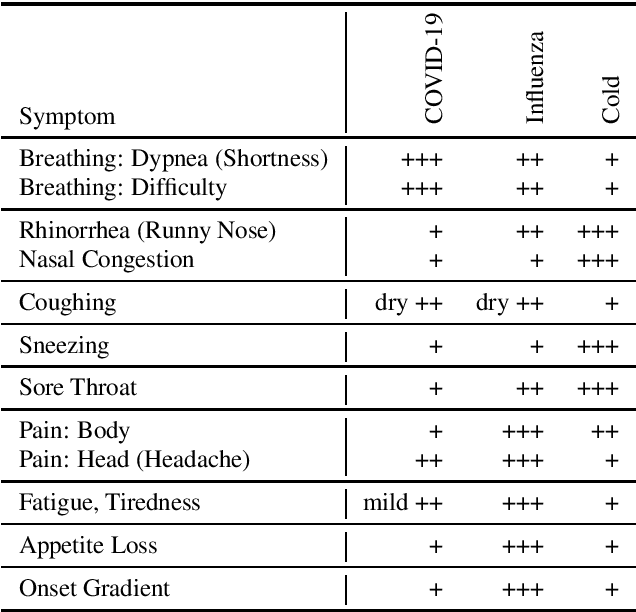Huaiyuan Zheng
An Early Study on Intelligent Analysis of Speech under COVID-19: Severity, Sleep Quality, Fatigue, and Anxiety
May 14, 2020



Abstract:The COVID-19 outbreak was announced as a global pandemic by the World Health Organisation in March 2020 and has affected a growing number of people in the past few weeks. In this context, advanced artificial intelligence techniques are brought to the fore in responding to fight against and reduce the impact of this global health crisis. In this study, we focus on developing some potential use-cases of intelligent speech analysis for COVID-19 diagnosed patients. In particular, by analysing speech recordings from these patients, we construct audio-only-based models to automatically categorise the health state of patients from four aspects, including the severity of illness, sleep quality, fatigue, and anxiety. For this purpose, two established acoustic feature sets and support vector machines are utilised. Our experiments show that an average accuracy of .69 obtained estimating the severity of illness, which is derived from the number of days in hospitalisation. We hope that this study can foster an extremely fast, low-cost, and convenient way to automatically detect the COVID-19 disease.
COVID-19 and Computer Audition: An Overview on What Speech & Sound Analysis Could Contribute in the SARS-CoV-2 Corona Crisis
Mar 24, 2020

Abstract:At the time of writing, the world population is suffering from more than 10,000 registered COVID-19 disease epidemic induced deaths since the outbreak of the Corona virus more than three months ago now officially known as SARS-CoV-2. Since, tremendous efforts have been made worldwide to counter-steer and control the epidemic by now labelled as pandemic. In this contribution, we provide an overview on the potential for computer audition (CA), i.e., the usage of speech and sound analysis by artificial intelligence to help in this scenario. We first survey which types of related or contextually significant phenomena can be automatically assessed from speech or sound. These include the automatic recognition and monitoring of breathing, dry and wet coughing or sneezing sounds, speech under cold, eating behaviour, sleepiness, or pain to name but a few. Then, we consider potential use-cases for exploitation. These include risk assessment and diagnosis based on symptom histograms and their development over time, as well as monitoring of spread, social distancing and its effects, treatment and recovery, and patient wellbeing. We quickly guide further through challenges that need to be faced for real-life usage. We come to the conclusion that CA appears ready for implementation of (pre-)diagnosis and monitoring tools, and more generally provides rich and significant, yet so far untapped potential in the fight against COVID-19 spread.
 Add to Chrome
Add to Chrome Add to Firefox
Add to Firefox Add to Edge
Add to Edge